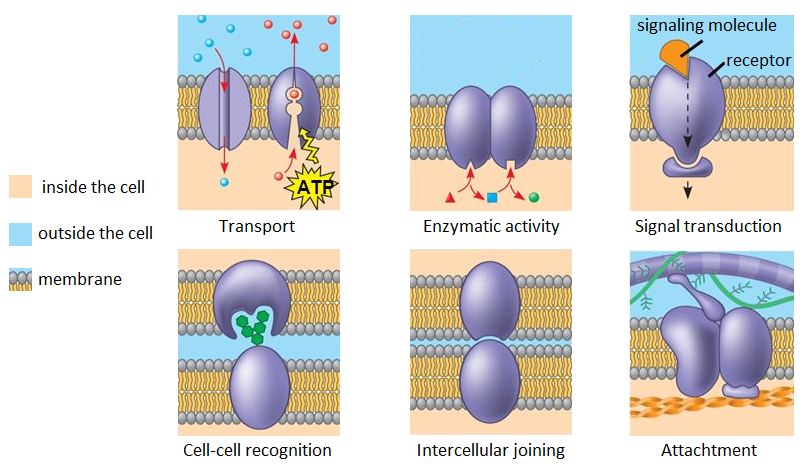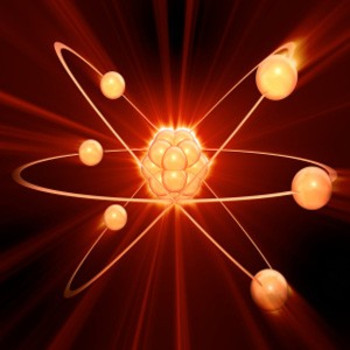What are the five categories of proteins commonly found in plasma membranes and what is the function of each one?
1 Answer
Transport proteins, enzymes, receptors, recognition proteins and joining proteins.
Explanation:
Different textbooks use different categories, probably because there are many types and variations of membrane proteins. I like to use the catagories defined by Campbell et al. The image below shows these categories:

1. Transport proteins
These transmembrane proteins can form a pore or channel in the membrane that is selective for certain molecules. It is also possible that they transport molecules by changing shape. Some require energy (ATP) for this transport.
Example: glucose transporter
2. Enzymes
These proteins have enzymatic activity. The active site is inside the cell. These proteins can occur as groups to facilitate a series of enzymatic processes.
Example: tyrosine kinases
3. Signal transduction proteins
These proteins receive a signal from outside the cell and convert this to a signal inside the cell. A signal molecule can for exampe change the shape of the protein allowing a protein from inside the cell to bind to the receptor.
Example: G-proteins.
4. Recognition proteins
Some of these proteins contain a certain 'tag' (usually a sugar) that can be recognized by membrane proteins of other cells. This way cells can communicate with eachother (transient). The tag can also be used to differentiate between different types of cells.
Example: glycoproteins that determine bloodtype.
5. Joining proteins
These proteins also bind to other membrane proteins as the previous proteins. In this case, however, the connection is tighter and lasts longer. '
Example: tight junction.
6. Attachment
You asked for 5, but Campbell describes 6. This can be considered similar to #5; only in this case the protein doesn't attach to other cells but to the cytoskeleton inside the cell or the matrix outside the cell.
Note that there are many subtypes. The image above only shows proteins that span the entire membrane (transmembrane). There are also proteins that are attachted to only one side of the membrane (integral). Yet other proteins are not embedded but only loosly attached to the membrane (peripheral).

